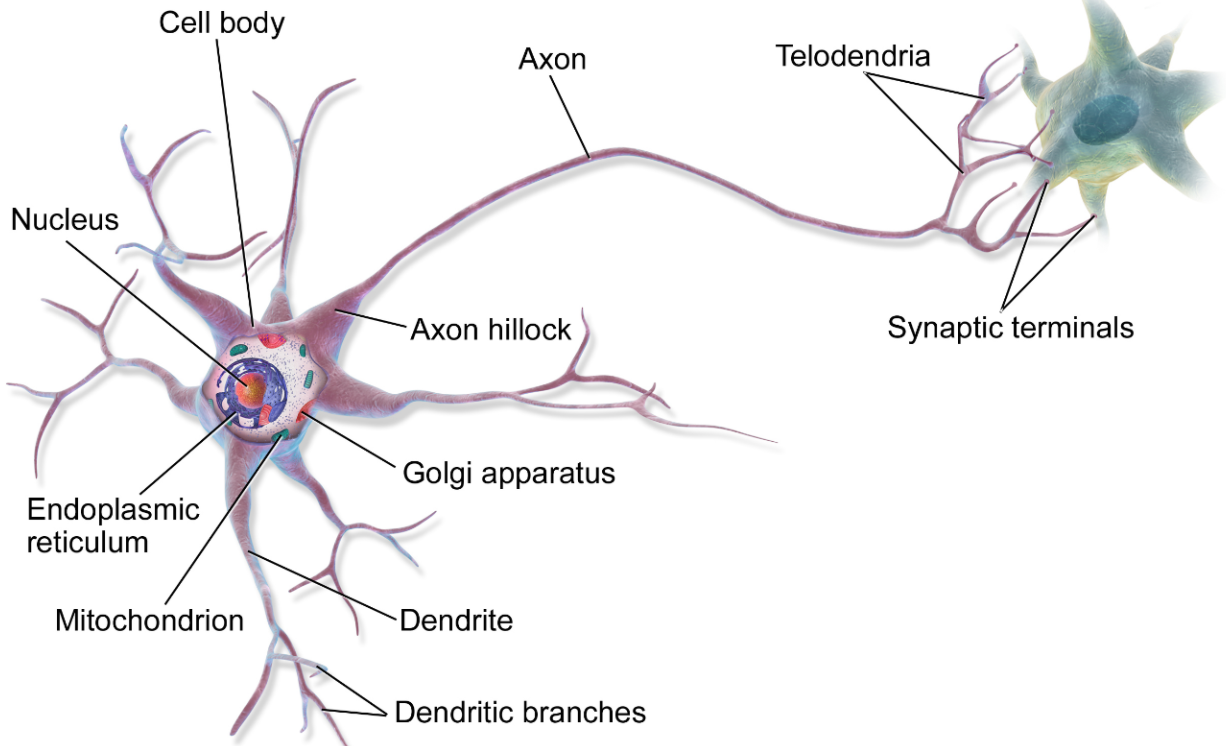
Which part of a nerve cell contains a nucleus?
(A) Axon
(B) Dendrite
(C) Cyton
(D) Nerve ending
Answer
556.8k+ views
Hint: The nerve cells are the basic unit of the nervous system that communicate to all the parts of the body. The neurons send the signal to the target cells like other neurons, brain, spinal cord, muscle cells, cells in the gland etc. These neuron cells are classified into four types as unipolar, bipolar, and multipolar and the pseudo unipolar neurons.
Complete Answer:
- The main parts of the neurons are axon, dendrite and cell body. Neurons fluctuate in size, shape, and structure depending upon their job and area. Cell body is otherwise called a soma, and it is the neuron's center.
- The cell body conveys hereditary data, keeps up the neuron's structure, and gives energy to drive the works of them. Like other cell bodies, a neuron's soma contains a nucleus and concentrated organelles. The part of the cell body which contains the nucleus is cyton.

- It's encased by a layer which both ensures it and permits it to interface with its quick environmental factors. An axon is a long, tail-like structure which joins the cell body at a specific intersection called the axon hillock.
- Numerous axons are protected with a greasy substance called myelin. Myelin encourages axons to direct an electrical sign. Neurons for the most part have one principle axon. Dendrites are the roots that branch out from the cell body. Dendrites get and measure signals from the axons of different neurons. Neurons can have more than one lot of dendrites, known as dendritic trees.
Thus the option (C) is correct.
Note: Purkinje cells are a unique kind of neuron mainly found in the areas of the cerebellum. These nerve cells have many numbers of the dendritic trees which permit them to get a great many signs from the different parts of the body.
Complete Answer:
- The main parts of the neurons are axon, dendrite and cell body. Neurons fluctuate in size, shape, and structure depending upon their job and area. Cell body is otherwise called a soma, and it is the neuron's center.
- The cell body conveys hereditary data, keeps up the neuron's structure, and gives energy to drive the works of them. Like other cell bodies, a neuron's soma contains a nucleus and concentrated organelles. The part of the cell body which contains the nucleus is cyton.

- It's encased by a layer which both ensures it and permits it to interface with its quick environmental factors. An axon is a long, tail-like structure which joins the cell body at a specific intersection called the axon hillock.
- Numerous axons are protected with a greasy substance called myelin. Myelin encourages axons to direct an electrical sign. Neurons for the most part have one principle axon. Dendrites are the roots that branch out from the cell body. Dendrites get and measure signals from the axons of different neurons. Neurons can have more than one lot of dendrites, known as dendritic trees.
Thus the option (C) is correct.
Note: Purkinje cells are a unique kind of neuron mainly found in the areas of the cerebellum. These nerve cells have many numbers of the dendritic trees which permit them to get a great many signs from the different parts of the body.
Recently Updated Pages
Master Class 12 Business Studies: Engaging Questions & Answers for Success

Master Class 12 Economics: Engaging Questions & Answers for Success

Master Class 12 English: Engaging Questions & Answers for Success

Master Class 12 Maths: Engaging Questions & Answers for Success

Master Class 12 Social Science: Engaging Questions & Answers for Success

Master Class 12 Chemistry: Engaging Questions & Answers for Success

Trending doubts
Who was the first woman to receive Bharat Ratna?

Write a letter to the principal requesting him to grant class 10 english CBSE

Why is there a time difference of about 5 hours between class 10 social science CBSE

What is the median of the first 10 natural numbers class 10 maths CBSE

The Equation xxx + 2 is Satisfied when x is Equal to Class 10 Maths

Discuss the main reasons for poverty in India




